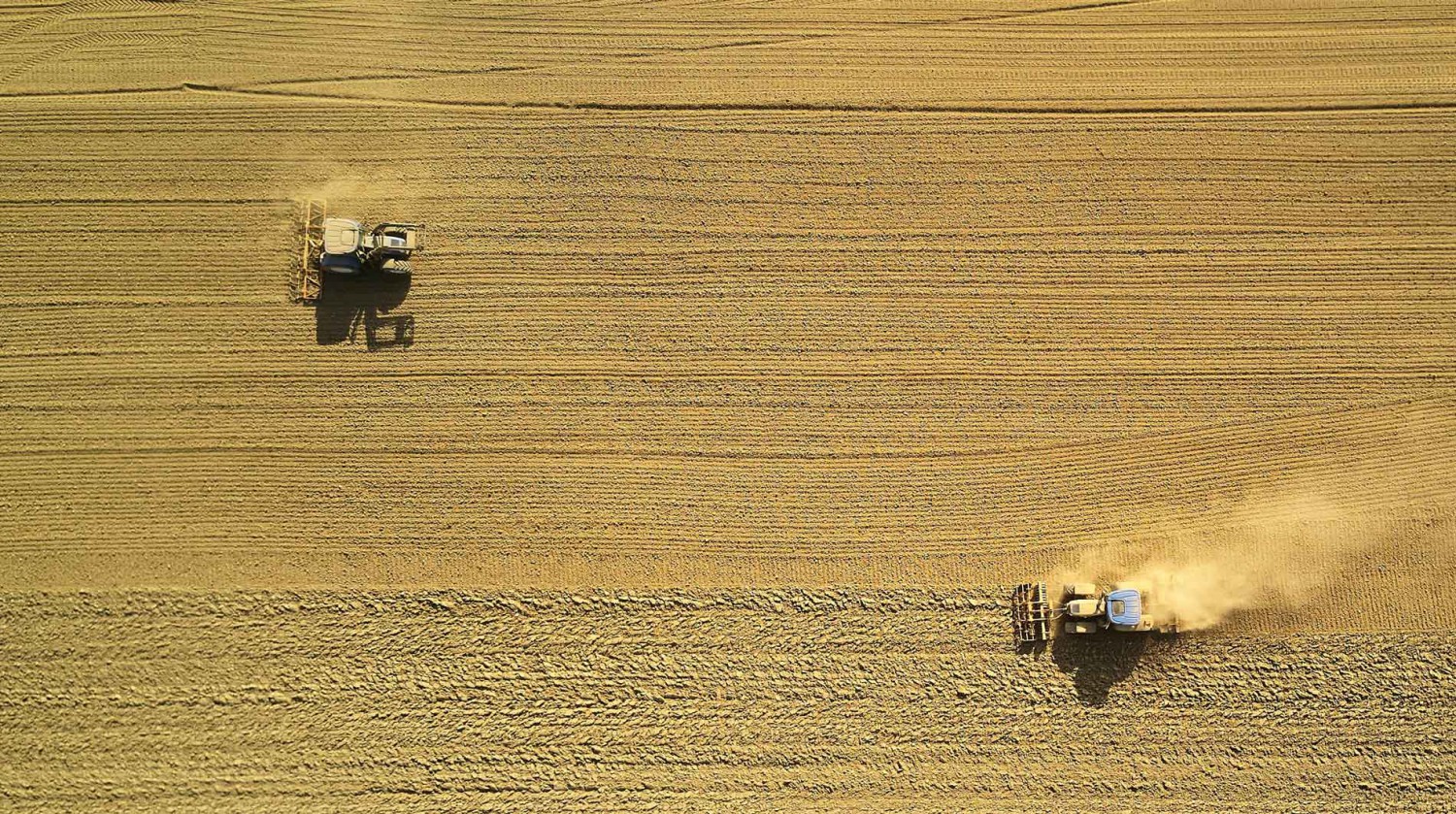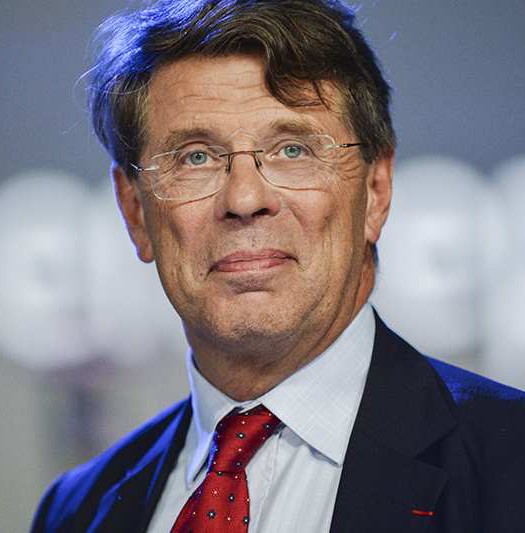Prediction is, as everyone knows, a difficult art “especially when it comes to the future” (A. Allais). At this beginning of autumn, the markets offer CyclOpe some reasons for pride, but also a good dose of humility. In January, CyclOpe’s forecast was based on a strong dollar (1.15 annual average on the euro) and a reasonable price for oil ($60 a barrel of Brent). At the time, our monetary forecast made the specialists smile, all of whom were expecting a weakening dollar: the consensus was around €1.25. On October 3, the dollar / euro was at 1.15 and the dollar’s weighted average was at its highest. It is true that the spread on long rates between the United States and Europe has reached 300 basis points. Chalk one up for CyclOpe.
In line with the logic that a strong dollar implies downward pressure on commodities markets, CyclOpe was very cautious in its outlook, especially so with respect to oil. Reasoning a ‘stable political situation’, we proposed a forecast of $60 for Brent as an annual average, which was also relatively consensual at the time. On October 3, Brent was trading at $85.32, WTI at $74.76 and in Dubai, Oman oil was well above $90! Our forecast was based on the dynamics of American production and from this point of view, it was well verified even if the logistical problems have somewhat restrained the upsurge.
We might have also better anticipated the continuation of the chaos in Venezuela and Libya. But Donald Trump’s decision to step out of the Iranian nuclear deal and impose a new embargo has changed the game. Even before being effective, the US embargo resulted in a drop in Iranian exports of 800,000 bpd. OPEC+ has certainly reacted, but even more insufficiently given Russia has little room to manoeuvre and in Saudi Arabia, it seems that the position of Crown Prince MBS, has weakened because of his excessive proximity to the United States and… Israel.
On the contrary, US policy is likely to strengthen the hard wing of the Iranian government and the possibility of action in the Strait of Hormuz is no longer just geopolitical fiction. In this context, the openly discussed hypothesis of Brent at $100 a barrel before the end of the year is gaining credibility. We are far from the forecast of CyclOpe last June! In any case, this is what is playing out in the markets and in the short term, we cannot really see anything that could reverse the trend.
“Errare humanum est, sed perseverare diabolicum!” Let us try, therefore, not to persevere too much, for at the end of the day it is the market which is right, so obdurately being the sum of man’s follies.
Philippe Chalmin
To subscribe to the Monthly Report or Cyclope events please contact us at trading_event@ampersandworld.ch
MARKET BRIEF ON OIL AND OTHER COMMODITIES
According to the IIF (which brings together the world’s leading banks), Iran’s oil and condensate exports fell by 800,000 bpd to 2mbd between April and September.
The average forecast of the IEA, EIA and OPEC gives an increase in oil consumption of 1.53 mbd in 2018 and 1.46 mbd in 2019. The three estimate that NOPEC production will be in excess of 580,000 bpd. Globally, two consultants have totally different visions: Rapidan (USA) anticipates a surplus of 1 mbd in 2019 while Energy Aspects (UK) sees a deficit of 300,000 bpd with a very tense situation in the last quarter of 2018. Both may be right: short-term tensions, medium-term relaxation. In any case, in September, OPEC produced only 32.85 mbd, 90,000 more than in August, and in fact the 12 OPEC members subject to quota cuts reduced their production by 70,000 bpd because of Iran and Venezuela. It appears that during the OPEC meeting in Algiers in September, Russia and Saudi Arabia proposed a production increase of 500,000 bpd.
The Australian government has released its price forecast for 2018/2019. For the calendar year, iron ore is placed at $52 per tonne FOB for 2019 and $51 for 2020 and $159 and $145 respectively for coking coal.
The Indian government is going to provide aid for transporting sugar to ports for export. The goal for India would be to export 5 mt.
Sharp rise in wool prices at auction in Australia: a rise of 20% since the beginning of the year to more than A $20 per kg because of drought. Production is expected to fall by 4% and livestock by 3%.
Glencore has signed a contract with the Japanese electrical company Tohoku Electric Power for 2018/2019 (as of Sept. 30) for steam coal at $109.77 per tonne, up 16% from the previous contract.
In the run-up to the 2019 elections, the Indian government has increased guaranteed prices to farmers, 6% for wheat and 5% for rapeseed.
In 2017, the paper recycling rate in Europe was 72.3%, compared with 40.3% in 1991. 48.3 mt of recycled paper was consumed and 10.5 mt were exported, mainly to Asia.
The spot market for LNG continues to grow: 77.6 mt were treated in 2017 and it is on this market that the new US export capacities will arrive. The global LNG market is in the order of 300 mt and could rise to 450 mt in 2025. Freight rates for LNG carriers are rising to $95,000 per day from $30,000 to $40,000 between 2015 and 2017.
In August, China imported 60,000 t of sorghum (-78.5%), 330,000 t of maize (-13.5%), 140,000 t of wheat (-51%), 550,000 t of barley (-29%) and 92,587 tonnes of pork (+11%) as well as 150,000 tonnes of sugar (-24%).
In August, OPEC+ produced 600,000 bpd less than its oil quota, mainly from Iran, whose output fell to 3.58 mbd while the Iranian authorities are talking about 3.8 mbd. Nevertheless, at the Algiers meeting on 23 September, there was no question of increasing production. In 2019, OPEC expects an increase in NOPEC production of 2.4 mbd for an increase in consumption of 1.5 mbd.
According to the OECD, 52 mt of new steel capacity will come on the market between 2018 and 2020 (with overcapacity estimated in 2017 at 561 mt…): 31.5 mt in the Middle East, particularly in Iran and 19 mt in Asia, especially in India and 5.9 mt in Africa, mostly in North Africa.
India’s demand for oil is expected to rise from 4.7 mbd in 2017 to 10 mbd in 2040 based on Indian sources. According to Total, the overall deficit of Asia in 2025 will be 35 mbd (27 in 2018).
Oil at $100 a barrel becomes a credible assumption for many actors starting with the directors of Mercuria and Trafigura. Bank of America is talking of $95 by the end of the year and JP Morgan of $85/90. In any case, oil from Oman, listed in Dubai, has passed the $90 mark! (usually Oman is worth less than Brent).
Brazil and Australia are threatening India with WTO complaints if it puts in place export subsidies for sugar.
Most analysts expect a nickel market deficit in 2018: 120,000 tonnes for Norilsk, 73,000 tonnes for Wood Mackenzie. Macquarie’s price forecast is $18,000 per tonne in 2019.
There are strong tensions in the alumina market, which is quoting more than $600 per tonne on the CME contract. This is linked to strikes in Australia and sanctions against Rusal.
ABARES has reduced its Australian wheat forecast by 13% to 19.1mt due to drought.
In August, China produced a (three year) record of 3.77 mbd of oil. But on the same month, it refined 11.85 mbd.
Of the $60 billion in US exports taxed at 10% by China, there is LNG. In 2017, China imported 15% of US LNG exports.
China is launching a strategy to reduce its dependence on US soybeans by seeking to reduce the share of soybeans from 20% to 12% in pig feed rations.
According to CRV, the lithium market will be in excess by 22,000 tonnes in 2018 for a demand of 277,000 tonnes. In China, prices fell by half from $24,750 per tonne in March to $13,000 in August.
In October, US natural gas production is forecast to reach 73.1 billion cubic feet, up from 60.3 in October 2017.
Australia’s drought, according to ABARES, is expected to lead to a 6% decline in wool production to 404,000 tonnes.
Uranium mine production declined from 165 million pounds in 2016 to 140 in 2018 according to BMD. But stocks are at 800 mlbs, four years of global consumption.
According to two NGOs, illegal trafficking in raw materials (oil, diamonds, ivory…) represent a turnover of $110 to $280 billion.
At more than $600 per tonne, the price of alumina rose by more than 50% in 2018: this is due to the impact of US sanctions on Rusal (11% of world production) as well as reductions in Brazil at Norsk Hydro.
In the first seven months of the year, zinc mining output decreased by 2.2%, lead by 4.3%, in both cases mainly because of China, in need of ore. On the other hand, copper production increased by 5% in the first half, thanks in particular to Congo. The production of tin increased by 1.9% over the first seven months and that of nickel by 13%, mainly thanks to Indonesia.
Indonesia is expected to import 8.5 million tonnes of wheat in 2018 making it the second largest buyer in the world behind Egypt. In the 2017/2018 agricultural year, Indonesia imported 10.5 mt behind Egypt’s 12.4 mt.
World oat production was 23 mt in 2017/2018, of which 3.2 mt were exported, half by Canada ahead of Australia. The two main buyers are the United States and increasingly, China.
In the United States, the soybean harvest is expected to reach a record high with the largest yields ever recorded: 52.8 bushels / acre and carry-out stocks of 23 mt, a level once again never reached.
For the first time, Côte d’Ivoire and Ghana (62% of world cocoa production) have agreed to announce prices to the planter: 750 FCFA in Ivory Coast (€1.07) and 7,600 Cedis in Ghana (€1.37).
To subscribe to the Monthly Report or Cyclope events please contact us at trading_event@ampersandworld.ch















